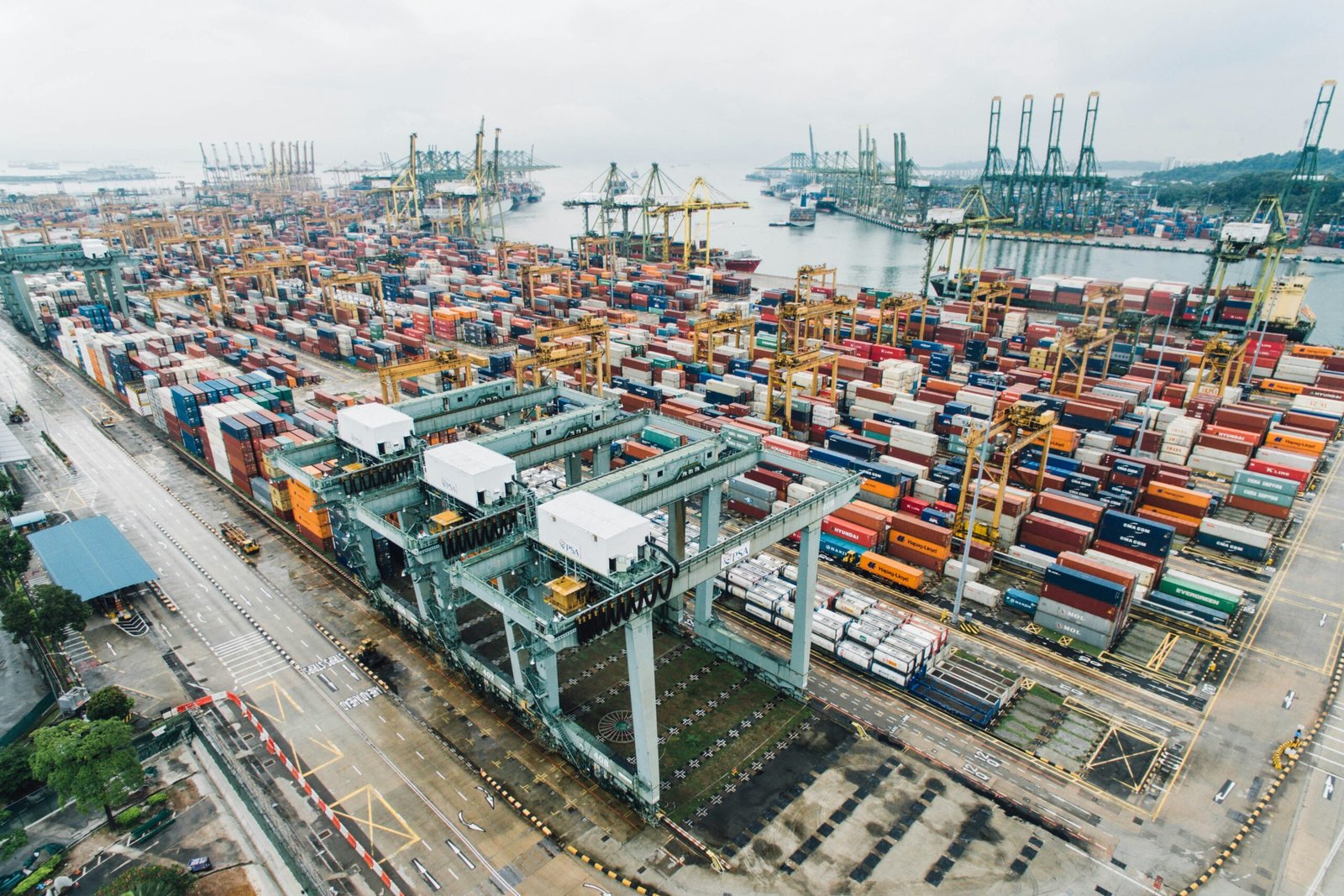Introduction to Cargo Ship Travel
The allure of travel has continuously evolved over the years, with various modes of transportation offering unique experiences. One increasingly popular choice is cargo ship travel, which presents an alternative to conventional cruise experiences. With the rise of adventure-seeking travelers, more individuals are exploring the option of embarking on journeys aboard freight vessels, which are primarily designed for transporting goods but also accommodate a limited number of passengers.
Cargo ship travel provides a distinctive experience characterized by its slower pace and the opportunity to visit remote destinations that traditional cruises often overlook. Unlike cruises, where travelers are typically whisked away to popular tourist hotspots, cargo ships follow their own logistical routes, providing a more authentic and less commercialized perspective of maritime travel. Passengers may dock at lesser-known ports, allowing for an enhanced cultural experience and interaction with locals, which is often absent in more commercialized experiences.
There are several types of cargo ships available for passenger travel, each with its own unique attributes. Container ships, bulk carriers, and tankers can all potentially provide passage for travelers looking for a different kind of adventure. The capacity for passengers on these vessels can vary significantly, from small vessels with a handful of travelers to larger ships accommodating dozens. Regardless of the type, cargo ship travel emphasizes practicality, allowing individuals to enjoy long journeys with a contemplative atmosphere while still being actively engaged in their surroundings.
It is also worth noting that the social environment aboard a cargo ship is distinct from that of a traditional cruise. Passengers on cargo ships often share common interests in travel and exploration, leading to a diverse yet connected travel community. The overall experience tends to be relaxed, offering an opportunity to disconnect from daily routines and reconnect with the beauty of the sea. Thus, cargo ship travel presents an exciting option for those looking for both practicality and adventure on the high seas.
Finding the Right Cargo Ship for Your Journey
Choosing the right cargo ship for your travel experience is essential to ensure a comfortable and enjoyable journey. As the popularity of traveling by cargo ship increases, it is crucial to conduct thorough research to find legitimate companies that offer passage on cargo vessels. Start by searching for reputable travel agencies or platforms that specialize in cargo ship travel, and consider reading reviews from other travelers who have embarked on similar adventures.
Understanding the different types of cargo ships available for travel is vital. Typically, there are various classes of vessels, including container ships, bulk carriers, and Ro-Ro (roll-on/roll-off) ships. Each type offers unique experiences and amenities, so it is essential to investigate what each class can provide during your journey. For instance, container ships might have limited passenger facilities compared to luxury cruise ships, while Ro-Ro vessels can offer more comfort and ease of access.
Evaluating the amenities onboard is another critical factor in finding the right cargo ship. Most cargo ships offer basic accommodations, such as sleeping quarters and communal dining areas. However, it’s important to check if the ship provides any additional amenities such as Wi-Fi, laundry services, or recreational spaces. Look for vessels that offer a balance of comfort and authenticity, as a well-rounded experience can significantly enhance your voyage.
When assessing routes and schedules, pay attention to the vessels’ itineraries, as these can significantly impact your travel plans. Cargo ships often follow strict shipping schedules, which may differ from traditional cruise lines. It is prudent to ensure that the chosen ship aligns well with your desired destinations and travel dates. Finally, familiarizing yourself with booking processes and preparing adequately for your adventure will contribute to a successful journey at sea.
Packing Essentials for a Cargo Ship Adventure
Packing for a journey on a cargo ship requires a unique approach compared to traditional travel. The experience is distinct, with the long duration and limited amenities influencing what you should bring along. Key to successful packing is the selection of clothing that can adapt to varying weather conditions. As cargo ships often traverse different climates, it is advisable to include layers that can easily be added or removed. Items such as lightweight jackets, comfortable walking shoes, and moisture-wicking fabrics will aid in adapting to changes in temperature and weather. Furthermore, waterproof clothing or a poncho can be beneficial for unexpected rain showers.
Beyond clothing, securing essential travel documents is paramount. This includes your passport, any necessary visas, and documentation specific to the cargo ship journey, such as a ticket or booking confirmation. It is wise to keep these documents easily accessible, perhaps in a waterproof pouch to ensure their safety during embarkation and throughout the trip.
Food can be another consideration, especially for those embarking on extended journeys. While cargo ships may offer limited dining options, packing snacks or easy-to-prepare meals can enhance your experience. Consider items that are non-perishable and nutritious, such as nuts, energy bars, or dried fruits. These can serve as excellent fuel during explorations or leisurely moments aboard the ship.
Given the confined space available in cargo ship cabins, efficient packing is crucial. Prioritize multifunctional items that can serve various purposes, reducing the volume of your luggage. Aim to leave behind bulkier items that may not be necessary for your voyage, such as extra electronic devices or non-essential clothing. Being mindful of your brand of travel can not only streamline your packing process but significantly enhance your overall comfort during the adventure.
What to Expect Onboard: Life on a Cargo Ship
Traveling on a cargo ship offers a uniquely different experience from the conventional cruise. Passengers can expect a more austere living environment, as accommodations on cargo vessels typically reflect a utilitarian design. Cabins are often smaller and more basic than those found on traditional cruise ships, often equipped with essential amenities such as a bed, storage space, and a shared bathroom. While the lack of luxurious facilities may seem daunting, many travelers find the simplicity to be a refreshing contrast to the glitz of cruise lines.
Meal services aboard a cargo ship vary based on the crew’s nationality and the duration of the voyage. Generally, passengers can enjoy home-style meals prepared by the ship’s cook, which can be a delightful experience for those who appreciate international cuisine. The communal dining area enables travelers to engage in conversation with crew members and fellow passengers, fostering a sense of camaraderie. It is advisable to approach meals with an open mind and to share dietary preferences in advance, as menus are often set, and flexibility may be limited.
One of the highlights of life on a cargo ship is the opportunity to engage in onboard activities. Unlike cruise ships, which feature a plethora of entertainment options, cargo ships provide a more subdued array of pastimes. Passengers may find themselves reading, writing, or simply enjoying the vast expanse of the ocean. Social interactions are generally more intimate, allowing for meaningful conversations with fellow passengers. The dynamics between travelers and the crew differ significantly from those on a cruise ship; on a cargo vessel, relationships often evolve into more genuine friendships, as everyone shares a common lifestyle for the duration of the journey.
To make the most of this unique experience, it is essential to remain adaptable and embrace the slower pace of life. Engaging with the crew and fellow travelers, appreciating the simplicity of the voyage, and remaining open to unexpected experiences can transform your time onboard into a rewarding adventure.
Safety and Health Considerations While Traveling by Cargo Ship
Traveling by cargo ship offers a unique experience, but it is essential to prioritize safety and health during your journey. Cargo ships are designed primarily for transporting goods, so understanding the safety protocols onboard is crucial. Passengers should familiarize themselves with the ship’s layout, particularly emergency exits and lifeboat assembly stations. Each vessel is required to have safety drills, so attending these sessions is imperative. Typically, staff will instruct passengers on how to use life jackets and follow evacuation procedures in case of an emergency.
Another primary consideration is health services available during the voyage. Cargo ships usually have limited medical facilities, with a trained crew member available for basic medical assistance. Nonetheless, it is advisable to carry a travel health kit with essential medications, including seasickness remedies, first aid supplies, and any personal prescriptions. Travelers should also be aware of their health status before embarking, especially for pre-existing conditions that may require ongoing care.
Seasickness can affect many passengers, regardless of their previous ocean experience. To manage potential discomfort, travelers can take preventative medication before departure. Staying hydrated and consuming light meals can also help mitigate symptoms. In addition, it is wise to choose a cabin located in the middle of the ship, where motion is least pronounced.
Overall, maintaining health while onboard requires planning. Regularly engaging in light physical activity, such as walking on deck, can promote well-being. Understanding the dietary options available and ensuring access to fresh fruit and vegetables can also contribute to a healthier lifestyle during the trip.
By adhering to safety protocols, being aware of health services, and preparing for any emergencies, travelers can enjoy a secure and pleasant journey aboard a cargo ship.
Exploring Ports and Destinations: Making the Most of Your Shore Excursions
Traveling by cargo ship offers a unique opportunity to explore diverse ports and destinations, presenting travelers with the chance to immerse themselves in local cultures. To maximize your shore excursions, it is essential to plan ahead for transportation and activities. Researching available transport options at each port is vital; many destinations offer public transportation, taxis, or even shuttle services that connect to popular tourist sites. A well-planned itinerary will allow you to experience the best each location has to offer.
When contemplating local attractions, it is beneficial to identify those that align with your interests. Whether you are drawn to historical landmarks, arts and culture, or natural wonders, understanding what each port is known for will help you prioritize your visits. Many destinations provide guided tours that can enhance your understanding of the local environment and its history, making for a more enriching experience. Additionally, visiting less-traveled paths can often lead to hidden gems, providing a more authentic glimpse into daily life.
Understanding the cultural significance of each destination is equally important when traveling by cargo ship. Engaging with local customs and traditions can foster a deeper appreciation for the places you visit. It is recommended to learn a few basic phrases in the local language, as this can endear you to residents and create a more welcoming atmosphere. Practicing respect for local customs, such as appropriate dress codes and behavior, not only enriches your visit but also promotes positive interactions with the communities you encounter.
Ultimately, shore excursions during your cargo ship journey can be both memorable and enlightening. By carefully arranging transportation, discovering local attractions, and honoring cultural nuances, travelers can significantly enhance their maritime adventure and create lasting memories of their port visits.
Navigating Potential Challenges of Cargo Ship Travel
Traveling by cargo ship can be an extraordinary experience, offering a unique perspective on maritime journeys. However, prospective travelers should be prepared for several challenges that may arise during their voyage. One of the most significant aspects to consider is the duration of travel. Unlike traditional cruise ships, cargo ships often have longer travel times due to their primary purpose of transporting goods. Passengers can expect extended durations at sea, which may require adjusting travel plans and expectations.
Another challenge associated with cargo ship travel is the unpredictability of itineraries. Unlike commercial cruises, which operate on fixed schedules, cargo ships may face delays due to loading and unloading processes or unforeseen weather conditions. Travelers should remain flexible regarding departure and arrival times, understanding that changes to the original itinerary may occur. This aspect of cargo travel is crucial, as it can influence not merely travel timelines but also connections to other travel arrangements.
Accommodations on cargo ships can also vary widely, with limited amenities compared to their cruise counterparts. Although some cargo ships offer comfortable cabins, others may provide minimalistic sleeping quarters. It is wise for travelers to research the specific vessel and its onboard facilities beforehand. Additionally, passengers should be prepared to adapt to the maritime environment, including limited dining options and activities compared to traditional cruise experiences.
To thrive amid these challenges, travelers should cultivate a mindset of flexibility and patience. Embracing the slower pace of cargo ship travel and maintaining a positive attitude can enhance the overall journey. An open-minded perspective will allow travelers to appreciate the unique experiences that arise during their voyage, making the journey more rewarding despite potential difficulties.
Environmental Impact of Cargo Ship Travel
Traveling by cargo ship presents a unique opportunity to explore the world while minimizing one’s ecological footprint. Compared to traditional modes of transportation such as airplanes and cruise liners, cargo ships tend to have lower carbon emissions per passenger. This reduction results from their fuel efficiency, as these vessels are built primarily for the transport of goods, allowing for a significant amount of travelers to share the space without contributing excessively to environmental degradation. The average cargo ship consumes considerably less fuel per ton of freight carried, translating into a more sustainable method of travel.
Moreover, cargo ship travel often utilizes existing commercial routes, reducing the demand for new infrastructure and thereby lessening the environmental impact associated with constructing new travel facilities. This approach conserves natural resources while fostering a more sustainable tourism model. Passengers can engage with the sea’s pristine environments while causing minimal disruption, which is a stark contrast to the more invasive impacts of conventional tourism that often leads to the overexploitation of fragile ecosystems.
Nevertheless, environmentally conscious travelers should remain vigilant in their efforts to promote sustainability. Engaging in responsible travel practices, such as reducing waste, conserving resources on board, and supporting initiatives that protect marine biodiversity, can further enhance the positive impacts of traveling by cargo ship. Travelers can advocate for sustainable fishing methods, support local conservation efforts, or participate in onboard educational programs that raise awareness about environmental issues. By making informed choices and conscious actions during their journey, passengers contribute significantly to the conservation of marine environments. This mindful approach ensures that the experience of traveling by cargo ship remains both enjoyable and environmentally sound.
Conclusion: Embracing the Adventure of Cargo Ship Travel
In summary, traveling by cargo ship presents a unique alternative to the conventional modes of transport. This form of travel invites adventurous souls to explore the world from a different perspective, offering an enriching experience that goes beyond typical tourist destinations. As we have discussed, the allure of cargo ship journeys lies not only in the leisurely pace of travel but also in the opportunity to connect deeply with the maritime culture and environment.
Cargo ship travel allows individuals to immerse themselves in the rhythms of the sea, experiencing the vastness and beauty of oceanic landscapes as they traverse from port to port. Passengers can enjoy spacious accommodations and less crowded environments compared to traditional cruise lines. This environment fosters an intimate connection with fellow travelers and crew members, often resulting in lasting friendships and shared stories of adventure.
Additionally, one of the most compelling reasons to consider this unconventional journey is the chance to engage with the elements of international trade and transport. Travelers can witness the behind-the-scenes operations of shipping and logistics, providing insights into global connectivity that are often overlooked. The journey itself becomes an exploration of not just destinations, but of the life and culture that exists aboard the ship and in each port of call.
As you contemplate your next vacation, let the idea of cargo ship travel captivate your imagination. Embrace the adventure that awaits, and opt for an experience that offers both the tranquility of the sea and the excitement of discovery. Cargo ship travel is not merely a means to reach a destination; it is a voyage filled with stories, connections, and an unparalleled appreciation for the vast waterways of our world.




